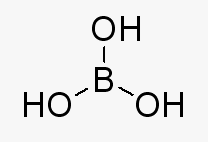phenacetin
English name PHENACETINUM or PHENACETIN
Standard Number WS1-55(B)
Content: 99%
CAS:62-44-2
Molecular formula: C10H13NO2
Molecular weight: 179.2158
Category: API, antipyretic and analgesic API.
Description: this product is white, with shiny scaly crystals or white crystalline powder, odorless, slightly bitter taste. This product is dissolved in ethanol or chloroform, slightly dissolved in boiling water
, very slightly dissolved in water.
Quality standard: Ministry standard or British Pharmacopoeia BP68 edition
Use: antipyretic analgesic, used to treat fever, headache, neuralgia, etc.
N-Benzylisopropylamine
Common Name Benzylisopropylamine
CAS Number 102-97-6
Molecular Weight 149.233
Density 0.9±0.1 g/cm3
Boiling Point 200.0±0.0 °C at 760 mmHg
Molecular Formula C10H15N
N-Benzylisopropylamine is mainly used as rust inhibitor for organic intermediates.
Appearance Properties: Colorless transparent liquid
Storage conditions :Store in a cool and ventilated warehouse away from the heat source of ignition and the oxidant should be stored separately, avoid mixed storage. Equipped with appropriate types and quantities of fire fighting equipment, the storage area should be equipped with emergency equipment for leakage and appropriate reception materials
Stability: Avoid contact with strong oxidants.
Boric acid
white powder crystal or triclinic axis scale – like gloss crystal, Boric acid flakes and chunks,smooth feel, no odor. Soluble in water, alcohol, glycerin, ethers and essential oils, the aqueous solution is weakly acidic. It is widely used in glass (optical glass, acid-resistant glass, heat-resistant glass, glass fiber for insulating materials) industry, which can improve the heat-resistant and transparent properties of glass products, improve mechanical strength and shorten the melting time.

Chinese name: Boric acid, PT
English name: Orthoboric acid
English alias: Boric Acid; Boron; Boricacidhighpurity; Boricacidwhitextl
Grade: PT
CAS Number: 10043-35-3/11113-50-1
EINECS 234-343-4
Molecular formula: H3BO3
Melting point: 169℃
Boiling point: 300℃
Density: 1.43g/cm3
Storage and transportation
Store in a sealed and dry place.
API ANTIPARASITIC DRUG RESISTANCE TO FILARIASIS AND ANTI-LEISHMANIASIS IVERMECTIN
Use of ivermectin
Ivermectin is a widely used antiparasitic agent in humans and animals. It is a positive isomerization effector of P2X4 and α7 nAChRs.
Ivermectin action
Ivermectin has good repellent effect on nematodes and arthropods in vivo. The elimination rate of hemocellus, Osteriasis, Cuprimatodes, Strongylodes (including Strongylodes escherichia), rounded nematodes, stomatodes, nematodes, nematodes and chabotnematodes in sheep and cattle was 97% ~ 100%. It is also effective against arthropods, such as maggots, mites and lice. The effect on chewing lice and sheep tick fly is slightly worse. Ivermectin is also highly effective against ticks and flies that reproduce in their faeces. Although the drug does not kill ticks immediately, it can affect feeding, molting and oviposition, thus reducing the reproductive capacity of ticks. The effect on blood flies is similar. The removal rates of roundworm, strongylodes rubosa, Strongylodes langerii, trichocephalus, oesophageal stomatodes, poststrongylodes, and adult and immature nematodes with odontocephalus were 94% ~ 100%, and they were very effective against trichinella spiralis in intestinal tract (but not against trichinella intramuscularis). They also had good control effects on blood lice and scabies. Not for flukes and tapeworms.
Post time: Mar-14-2022
